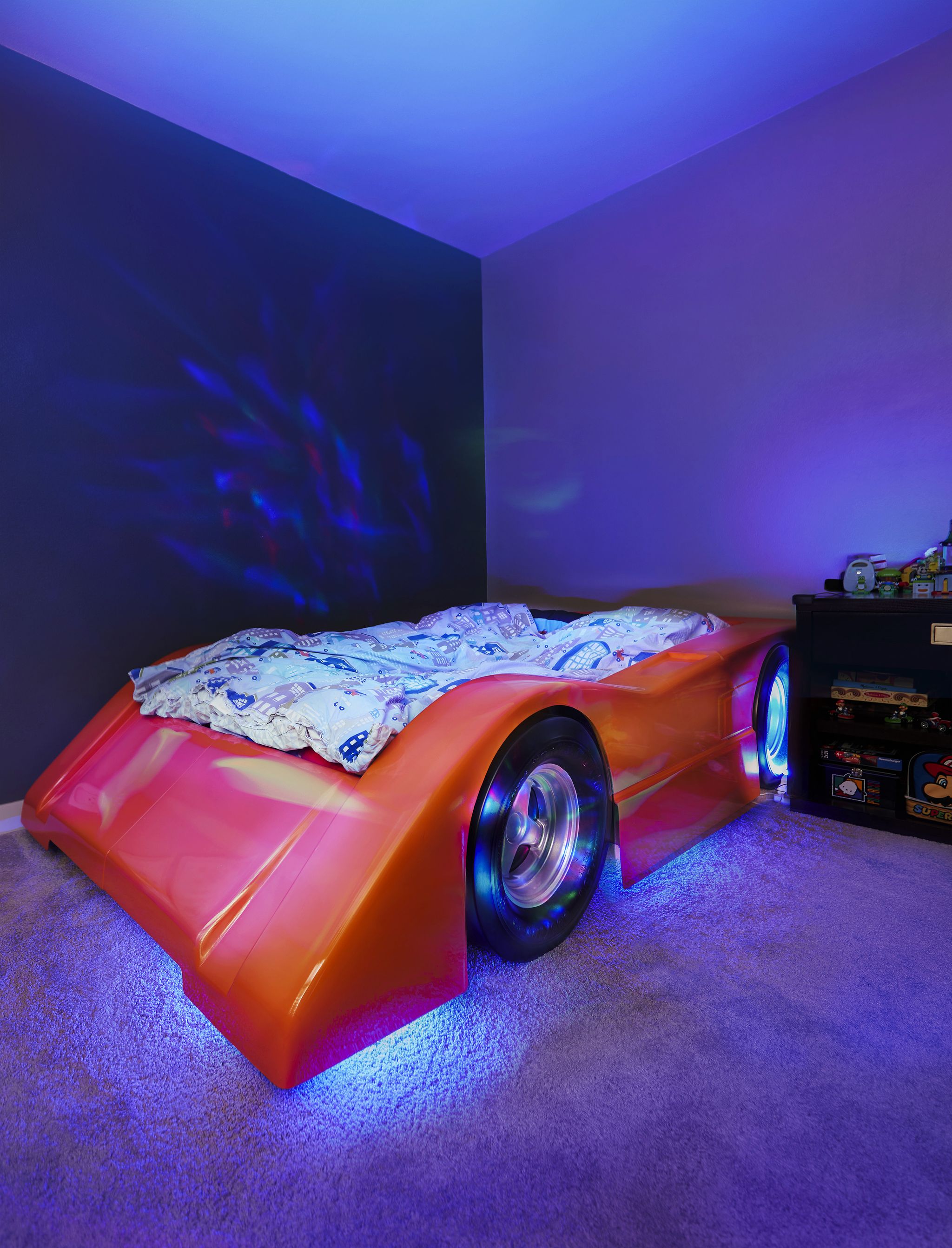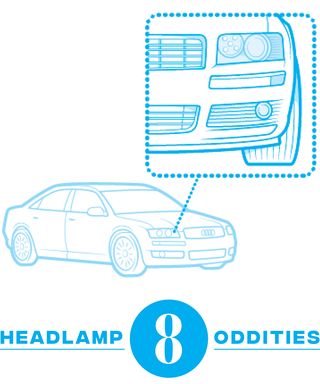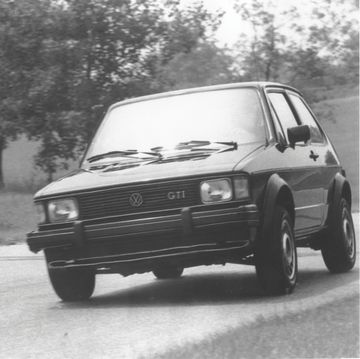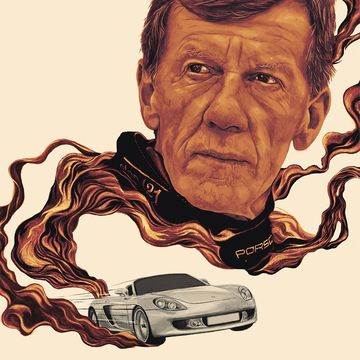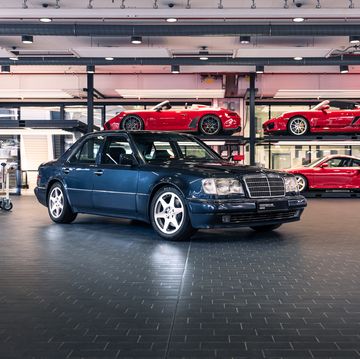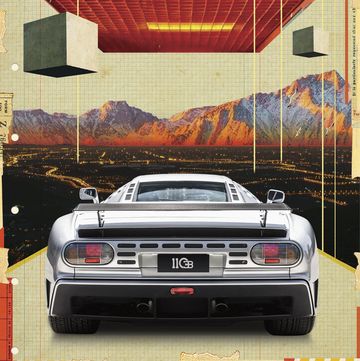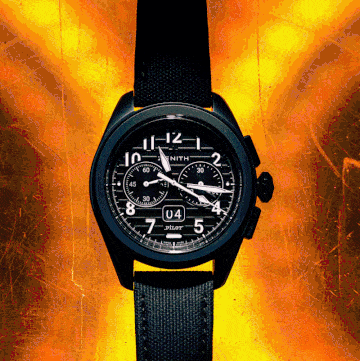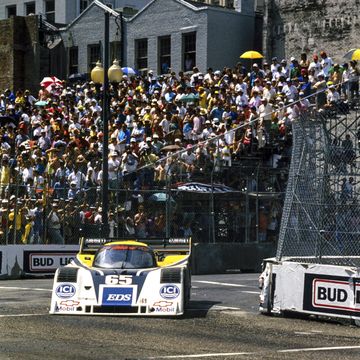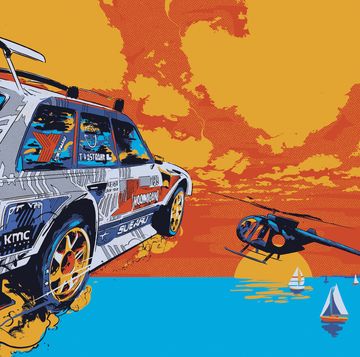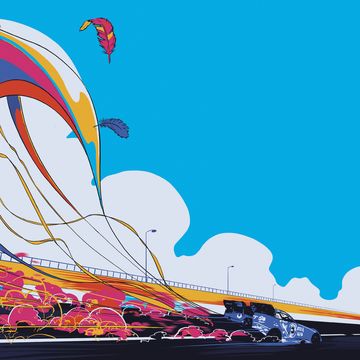Matthew NGO was not the first driver of the Night Racer. He inherited the seat from his cousin Jack Stewart, who took over when Azra Schorr got a little too teenage-cool to sleep in a car-shaped bed. Schorr, who had the livery swapped from Petty blue to McLaren orange, got driving duties from her father, Stuart, who got them from his father, Martyn, who bought the B.F. Meyers & Co. furniture new for his son back in the early Seventies. Much like a real race car, the Night Racer has moved from team to team, always finding an eager young pilot. But who dreamed it up in the first place?
This story originally appeared in Volume 10 of Road & Track.
SIGN UP FOR THE TRACK CLUB BY R&T FOR MORE EXCLUSIVE STORIES
Anything quirky, charming, and made of fiber-glass in the late Sixties invariably leads back to Bruce Meyers, who used the stuff to make surfboards and, most famously, the dune-hopping Meyers Manx. By 1970, Bruce’s buggies were buried in cheap knockoffs, leaving him in search of a new venture. “If only we could just make a gorgeous piece of fiberglass and put it in a box and sell it,” he said to designer Stewart Reed, who went home, watched a few Can-Am races, and came back to Meyers with sketches for a child’s bed based on the winning cars of Denny Hulme and Bruce McLaren.
“I just drew it,” says Reed. “I had been out to Riverside for the race, and a few days later, I went to Solar Plastics in Van Nuys. The McLarens were in the garage next door to Steve McQueen’s cars, and I had a chance to look them over. So when it came to the bed, I knew that shape so well. I just played around with scaling it down, still identifiably a McLaren, still a serious, cool race car—not a cartoon. I got a 10-inch Honda racing wheel, a really neat little aluminum wheel and tire, and took that back to Meyers Manx. We thermoformed wheels and slicks and riveted them to the sides.”
Reed doesn’t remember how many Night Racers they made. It wasn’t enough to save the company, which went bankrupt in ’71. But he does recall who bought the very first one. “I think it was the 1970 SEMA Show,” he says. “We had the McLaren race-car bed in our display, and Parnelli Jones comes up and asks if he could buy it. We said, ‘Sure, after the show.’ And you know who slept in it? P.J. Jones!”
Not to fault Reed’s memory, but we checked with P.J. “We didn’t have one,” he says, “we had two: one for me and one for Page,” his brother. Makes sense—it’s not much of a race with just one car.

Like a sleeper agent activated late in the game, Elana Scherr didn’t know her calling at a young age. Like many girls, she planned to be a vet-astronaut-artist, and came closest to that last one by attending UCLA art school. She painted images of cars, but did not own one. Elana reluctantly got a driver’s license at age 21 and discovered that she not only loved cars and wanted to drive them, but that other people loved cars and wanted to read about them, which meant somebody had to write about them. Since receiving activation codes, Elana has written for numerous car magazines and websites, covering classics, car culture, technology, motorsports, and new-car reviews. In 2020, she received a Best Feature award from the Motor Press Guild for the C/D story "A Drive through Classic Americana in a Polestar 2." In 2023, her Car and Driver feature story "In Washington, D.C.'s Secret Carpool Cabal, It's a Daily Slug Fest" was awarded 1st place in the 16th Annual National Arts & Entertainment Journalism Awards by the Los Angeles Press Club.
